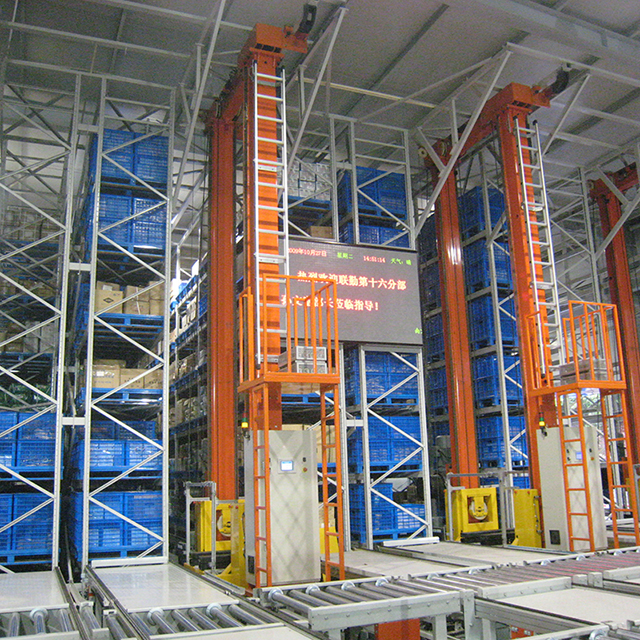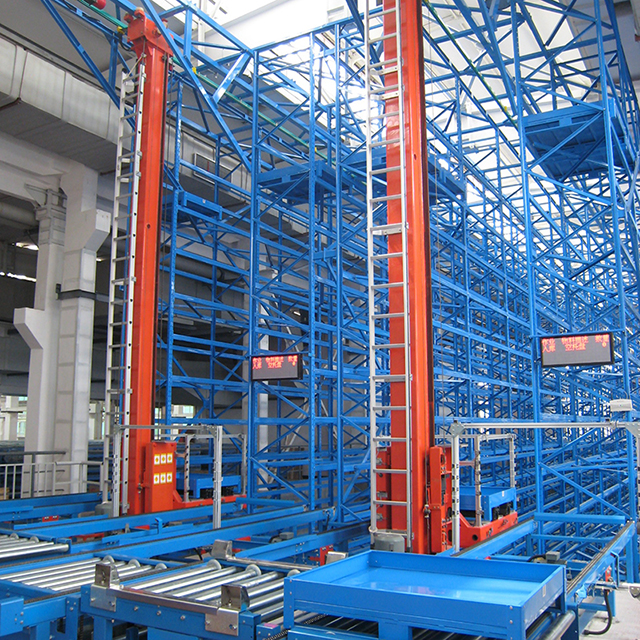(+86)-025-86106536 (+86)-13705159108
- All
- Product Name
- Product Keyword
- Product Model
- Product Summary
- Product Description
- Multi Field Search
Views: 0 Author: Site Editor Publish Time: 2025-01-13 Origin: Site








Military humidity-controlled warehouses are vital components of logistical operations, especially when it comes to safeguarding sensitive equipment, electronics, and materials that are highly susceptible to damage from extreme humidity and temperature fluctuations. The investment required to build and maintain these highly specialized facilities is significant, but the long-term benefits they offer in terms of preservation, efficiency, and operational readiness are invaluable. In this article, we’ll explore the costs associated with constructing, operating, and maintaining automated warehouses for military use, with a focus on humidity control and other key factors like AS/RS systems, Heavy Duty Pallet Racking, and Special Racking.
A military humidity-controlled warehouse is designed to protect sensitive equipment and materials from the damaging effects of moisture. These warehouses are specifically engineered to maintain a consistent temperature and humidity level, ensuring the longevity of critical assets like weapons, electronics, ammunition, medical supplies, and even sensitive foodstuffs. The technology used in these warehouses typically includes automated systems such as AS/RS systems (Automated Storage and Retrieval Systems), and special racking solutions designed to optimize storage space while maintaining environmental stability.
The complexity of military humidity-controlled warehouses lies in their advanced infrastructure, which often integrates a combination of Heavy Duty Pallet Racking and Special Racking solutions to efficiently manage high volumes of goods. These systems can significantly increase the efficiency of supply chains by reducing the time needed to store, retrieve, and distribute goods, and are especially beneficial in high-security military environments where precise control over inventory is required.

Several factors contribute to the high costs of military automated warehouses, particularly those designed for humidity control. These factors can be broken down into the following:
The initial design of a military warehouse plays a crucial role in determining its cost. The construction of a humidity-controlled environment requires the integration of advanced materials, insulation, and HVAC systems that can maintain optimal conditions for sensitive materials. These features add considerable costs, as they must be engineered to withstand harsh environmental conditions while ensuring maximum operational efficiency.
Temperature and humidity control systems: Specialized HVAC systems are required to manage both temperature and humidity levels.
Advanced insulation: High-quality insulation materials are necessary to minimize temperature fluctuations and moisture ingress.
Security features: Given that military warehouses house sensitive equipment, enhanced security measures like biometric access, surveillance systems, and physical barriers are required.
An AS/RS system is one of the most significant investments in an automated warehouse. These systems use robotic machines to transport goods to and from storage locations without the need for human intervention. AS/RS systems can significantly enhance storage efficiency by reducing the space required for shelving, minimizing human error, and increasing the speed of inventory handling.
While the integration of AS/RS systems adds significant upfront costs, they offer long-term benefits in terms of operational efficiency and labor cost savings. The more sophisticated the AS/RS system, the higher the costs. Factors influencing the cost of an AS/RS system include:
Size of the warehouse: Larger systems require more extensive infrastructure and automation.
Level of automation: Fully automated systems are more expensive but provide greater operational flexibility.
Customization: Specialized features, such as special racking for irregularly shaped items, increase system complexity and cost.
Heavy Duty Pallet Racking is a critical component of most military warehouses, as it provides the necessary storage space for large and heavy items. These racks are typically made from steel or other durable materials, allowing them to hold heavy equipment and supplies securely. The Heavy Duty Pallet Racking used in military warehouses must meet specific weight and size requirements, which can influence the overall cost of the warehouse.
Factors affecting the cost of Heavy Duty Pallet Racking include:
Material quality: High-strength steel or custom materials increase the price.
Load capacity: Racking designed to handle larger and heavier loads is more expensive.
Customization: Custom racking solutions, such as those designed to fit specific military equipment, can drive up costs.
In addition to Heavy Duty Pallet Racking, military warehouses often require special racking solutions designed to accommodate irregularly shaped or delicate items. Special racking systems can include adjustable shelving, multi-level storage, and even custom-built structures for specific military equipment.
The cost of special racking depends on:
Design complexity: Custom-built racking systems are more expensive than standardized solutions.
Material used: High-strength materials or corrosion-resistant coatings add to the cost.
Space optimization: Highly efficient designs that maximize storage space while maintaining accessibility can increase costs.
The ongoing costs of maintaining a humidity-controlled warehouse are another significant factor. These costs include energy bills for operating the HVAC systems, regular inspections and maintenance of the AS/RS system, and the upkeep of Heavy Duty Pallet Racking and special racking systems. Additionally, any necessary upgrades to the infrastructure or automation systems can add to the operational costs.

The cost to build a military humidity-controlled warehouse can range from $1,000,000 to over $10,000,000, depending on the size, design, and technology used.
The AS/RS system is one of the most significant cost components. The system adds an initial cost of $1,000,000 to $10,000,000, depending on the complexity and level of automation.
Maintenance costs for an automated warehouse can range from $100,000 to $1,000,000 annually, depending on the complexity of the automation systems and HVAC requirements.
Yes, special racking systems tend to be more expensive than Heavy Duty Pallet Racking, as they often require custom design and materials for optimal storage of irregular items.
The installation of HVAC and humidity control systems can cost between $200,000 and $2,000,000, depending on the size and specifications of the warehouse.
Building and maintaining a military humidity-controlled warehouse involves a significant financial investment. The total cost can range from $1,000,000 to $20,000,000 or more, depending on factors such as warehouse size, automation level, and specialized systems like AS/RS and special racking. However, the benefits provided by these systems in terms of inventory management, efficiency, and preservation of critical military assets make the investment worthwhile for military operations. By integrating Heavy Duty Pallet Racking and leveraging the latest advancements in automation, military organizations can ensure that their inventory remains secure, organized, and accessible, even in the most demanding environments.
China : Floor 9, Building 1, Zijinxicheng Center, No. 118 Olympic Gym Str., Jianye, Nanjing, Jiangsu, China
US: 3702 W Sample Street,South Bend,Indiana,46619
Our company is a manufacturer of warehouse racks and automation warehouse system. During the past 20+ years, our company has been dedicated to planning, designing, producing and installing rack system and AS/RS system.